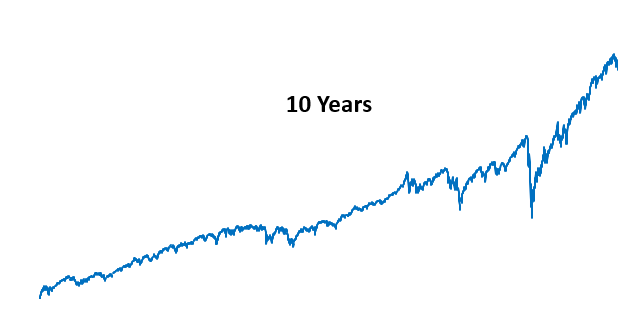Before we begin, I’ll emphasize that investing wisely is paramount in the context of a long-term financial plan. Without it, your money wouldn’t keep up with inflation and your dollars would lose value. And in most situations, you should still take advantage of your company’s 401k match (if there is one) because it’s free money! But beyond this, there are times when it’s actually not a good idea to invest. Three times not to invest are when:
You Don’t Have an Adequate Emergency Fund
The first step to building a strong financial foundation is an emergency fund. Typically, your emergency fund should equal between three to six months of expenses. If you’re a part of a one-income household or the majority of your income is from commissions, you may want even more than this. Your emergency fund should be in a safe place and fully liquid so that when you need the money, it’s there. With investing, it’s best to have flexibility on when the money is needed so that you don’t end up with less than your initial investment. And that brings us to the second time you shouldn’t invest.
You are Saving for a Short-Term Goal and the Time Frame is Not Flexible
Investing is for the long-term. Short-term investing can be costly because of market volatility. Take a look at the pictures below. In the three-month picture, the market goes up and down a lot. If you buy at point A and then sell at point B, you’ll have less money than what you had to begin with. This scenario illustrates the risk when a certain amount of money is needed for an upcoming goal that doesn’t have a flexible time frame (like upcoming college tuition or a house down payment). Even if you end up with more than when you started, you took a lot of risk for that gain.
In contrast to this, the ten-year picture illustrates that the market goes up over time and volatility (while still present) is generally not as big of a factor when the time frame is flexible. For this reason if your goal is within the next two to three years, the money shouldn’t be invested.


You Have Certain Types of Debt that Need to be Paid
Last but not least, some types of debt should be paid off before investing. For example, credit card debt with an ongoing balance. This type of debt is very expensive and will typically cost you more than what you could make on a consistent basis from investing. It’s a good idea to continue building a strong financial foundation by paying off this expensive debt. In general, mortgages, student loans, low-interest auto loans, and business loans don’t need to stop you from investing but any high-interest debt should be targeted first.
So there you have it! It’s difficult to cover every circumstance here but this is a good framework that applies to most situations. If you have questions about your particular situation, I’m happy to help. You can contact me here.






